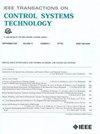Degradation Monitoring and Characterization in Lithium-Ion Batteries via the Asymptotic Local Approach
IF 4.9
2区 计算机科学
Q1 AUTOMATION & CONTROL SYSTEMS
引用次数: 0
Abstract
Degradation mechanisms affecting the long-term performance of lithium-ion batteries should be monitored and characterized. Such mechanisms, such as loss of lithium inventory (LLI) or active material, can be translated into parameter variations in electrochemical battery models. Here, a reduced-order model (the equivalent hydraulic model) is considered as it provides a good tradeoff between physical interpretability and complexity. The aim is to detect and characterize degradation, namely, to indicate the parameters subject to change, from standard (dis)charge data. To this end, change indicators (or residuals) are computed by combining a state observer and a local statistical approach. Model parameter changes induce changes in the mean of the residual vector which is asymptotically normally distributed with a specified variance. Degradation detection and characterization is achieved by processing the latter residual by statistical tests relying on log-likelihood ratios between multiple simple hypotheses. Results indicate the long-term changes in the main degradation modes affect battery performance. Most degradation modes considered are active at the 0.1% relative parametric change level, but active material loss reaches the 1% parametric change level over the battery lifetime, and 10% parametric change levels are obtained for sluggish diffusion and impedance rise. We show how the proposed methodology could be a useful alternative to methods based only on parameter identification.基于渐近局部方法的锂离子电池退化监测与表征
需要对影响锂离子电池长期性能的降解机制进行监测和表征。这种机制,如锂库存(LLI)或活性物质的损失,可以转化为电化学电池模型的参数变化。这里考虑的是降阶模型(等效水力模型),因为它在物理可解释性和复杂性之间提供了很好的权衡。其目的是检测和表征退化,即从标准(非)电荷数据中指出可能发生变化的参数。为此,通过结合状态观测器和局部统计方法来计算变化指标(或残差)。模型参数的变化会引起残差向量均值的变化,残差向量呈渐近正态分布,具有一定的方差。降解检测和表征是通过依赖于多个简单假设之间的对数似然比的统计检验处理后的残差来实现的。结果表明,主要退化模式的长期变化会影响电池的性能。考虑的大多数降解模式在0.1%的相对参数变化水平下是活跃的,但在电池寿命期间,活性物质损失达到1%的参数变化水平,而缓慢扩散和阻抗上升则达到10%的参数变化水平。我们展示了所提出的方法如何成为仅基于参数识别的方法的有用替代方法。
本文章由计算机程序翻译,如有差异,请以英文原文为准。
求助全文
约1分钟内获得全文
求助全文
来源期刊

IEEE Transactions on Control Systems Technology
工程技术-工程:电子与电气
CiteScore
10.70
自引率
2.10%
发文量
218
审稿时长
6.7 months
期刊介绍:
The IEEE Transactions on Control Systems Technology publishes high quality technical papers on technological advances in control engineering. The word technology is from the Greek technologia. The modern meaning is a scientific method to achieve a practical purpose. Control Systems Technology includes all aspects of control engineering needed to implement practical control systems, from analysis and design, through simulation and hardware. A primary purpose of the IEEE Transactions on Control Systems Technology is to have an archival publication which will bridge the gap between theory and practice. Papers are published in the IEEE Transactions on Control System Technology which disclose significant new knowledge, exploratory developments, or practical applications in all aspects of technology needed to implement control systems, from analysis and design through simulation, and hardware.
 求助内容:
求助内容: 应助结果提醒方式:
应助结果提醒方式:


